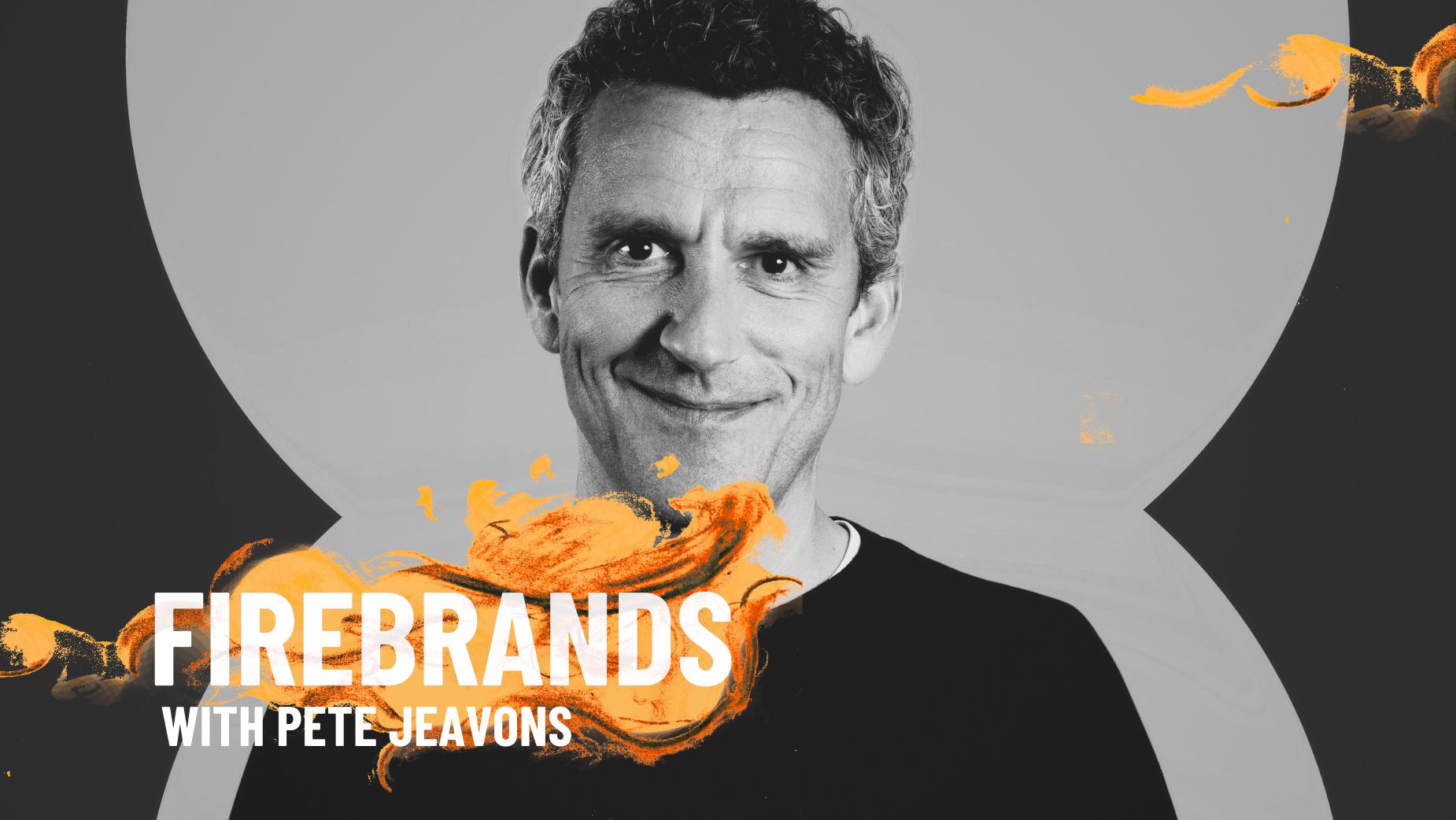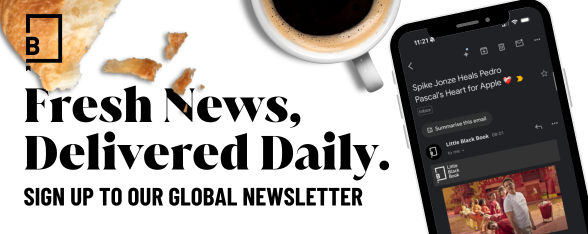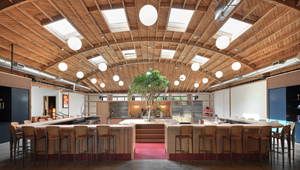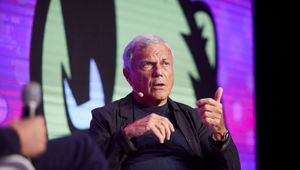
Firebrands: EE’s Pete Jeavons’ Journey from Call Centre to Marketing Maestro

If there were such a thing in marketing as a Yellow Jersey well, Pete Jeavons wouldn’t be wearing it because he’s far too humble and self-effacing for that, but it would certainly be hanging in his wardrobe. A cycling enthusiast, he’s currently on the victory lap after a journey as gruelling as any Tour de France and one that has required him to draw upon every part of his marketing toolkit, from bold brand transformation to customer-centric product development and all of the deft internal leadership that’s needed to carry it off.
In October, EE revealed its new vision and launch campaign which sees the brand take over as British Telecom’s only consumer-facing telco brand and set out a runway for growth that will take it far beyond broadband and mobile. It’s thus far been celebrated as a triumph for the EE marketing team and its partner agencies Saatchi & Saatchi, Digitas, Boomerang, Publicis•Poke, Zag and Prodigious, but for Pete it’s also seen him reach a peak of a rather more personal hill. It’s the pinnacle of his relationship with EE and the brands that came before it; a relationship that stretches back to the ‘90s.
You see, Pete Jeavons didn’t plan to become a marketer - which is probably just as well. If he’d sat down and planned it all out, chances are he wouldn’t have written ‘get job at call centre’ at the top of his to-do list. This was the job that started it all off and, unwittingly, cued him up for the golden age of customer-centric marketing.
And when we say he didn’t plan it, we really mean it. Pete had dropped out of university - he’d found himself on a course that didn’t suit him and had ‘enjoyed being at university too much’. Mobile giant Orange - which would through various business deals and rebranding later morph into his current home, EE - just happened to have a call centre in Darlington, in the Northeast of England, near his parents’ home.
“Orange was at its pomp and splendour as a brand. I accidentally got a job there and very quickly worked out it was actually a very exciting place to be - there were opportunities about and the brilliant thing was it didn’t matter whether you had a formal education or not. Are you smart? Are you capable? Are you a hard worker and a good, decent person? If the answer to all that was yes, the opportunities were boundless.”
Day-in, day-out, he was listening to customers and that very quickly led to the chance to move to London for a role in ‘market insights’, or market research. “It’s one of the biggest grounders because I really understood what the customers were thinking about, what was important to them, but also the experiences we were giving them. All of that grounds you in reality, rather than being separate from that world,” he reflects, saying that his frontline perspective was what clinched that job in insights. It was, he says, “a proper ‘Sliding Doors’ moment.”
All these years later, those foundational experiences have found a new relevance as EE has relaunched with a new positioning and brand platform - and an ambition to be ‘the most personal brand in the UK’. The new strategy is all about meeting people where they are, and tailoring messaging around specific pillars: Game, Home, Work and Learn. “It’s not consciously at all, but I think that focus on the customer and that drive to be the most personal brand in the UK, it’s almost full circle.”
Around the time Pete made his way from insights into the marketing team - via some casual networking during his morning coffee and cigarette as he waited for his computer to boot up - Orange had launched an early, pre-big data era version of a targeted campaign. ‘Animals’ packaged up different tariffs and contracts according to needs, from texting teens to all-the-bells-and-whistles of the 3G age execs, and branded them up as different creatures. Looking back, Pete realises, it was ahead of its time. “On the one hand, I think it worked incredibly well, on the other hand, it was slightly bonkers.”
It was something of a golden age creatively - the iconic ‘Orange Wednesdays’ campaign was in full flow as everyone from Carrie Fisher to Steven Seagal tried their luck pitching movie ideas to The Orange Film Board. Pete wasn’t directly involved in the creative - his focus at the time was brand management and experience - but he was immersed in a culture that embraced ambitious ideas.
“It was like a melting pot of ideas that were always trying to push the boundaries. At the time it was an amazing brand - it was a real, innovative, customer-focused, game-changing brand, which was such a great thing to work with. And it was something I was really proud to work with as well,” he says reflecting on the entrepreneurial spirit and openness to ideas.
There’s something of that culture that’s threaded its way through several changes in ownership and even branding over the past two decades. The condensed history is this: In 2000, Orange was bought by France Telecom, and in 2009 France Telecom and Deutsche Telekom decided to merge their respective Orange and T-Mobile brands in the UK to create a new entity, EE. In 2015, EE was bought by the national institution that is British Telecom (BT). The jeans-and-trainers-wearing EE gang found themselves in the corporate offices of BT, a place of suits and stuffiness in London’s St Paul’s.
As a marketer, Pete found himself caught between the sales-driven short-termist approach of BT's marketing and EE’s appreciation of the importance of brand as a driver of longer-term and short-term metrics. “It was very much a ‘trade, trade, trade’ mentality within BT. And don’t get me wrong, it was a very successful trading machine but I think that did mean that the brand was neglected,” he recalls.
But in that time, EE penetrated the national consciousness with its well-known Kevin Bacon-fronted ads and increasingly daring stunts to demonstrate the strength of the network, such as getting a family to land a plane and having a barber in London give a remote shave to an actor sitting in the Welsh mountainside.
Which brings us to the latest chapter. In 2022, it was announced that the upstart EE would take over from BT as the main consumer-facing brand. Given BT’s heritage and history within the UK, the boldness of this move can’t be understated.
When EE first joined BT it became apparent that there were two business units doing the same thing, with separate people, structures and organisations. The two were brought together under one CEO but were still pretty siloed. Which resulted in all sorts of cross-purposes when trying to sell landlines and broadband (BT), and mobile (EE) to the same people. And if it was complicated and difficult internally, it was also not terribly consumer-friendly either.
It became clear that the two brands would have to come together. But that still left a lot of questions. For one thing, which would make most sense in the next decade and the future of connectivity? From a growth perspective, there’s a limit to the number of broadband lines you can sell - but with SIMs going into more devices beyond the smartphone, it seemed that mobile tech opened up opportunities everywhere from security to health.
“When you start to overlay in the new business opportunities and new vertices that got us to, it’s pretty obvious we needed to go to one brand - but which brand? Do you go with one of our existing brands, do you go with something new, like we did with EE when it was born out of Orange? In truth, we very quickly got to [the fact that] creative anew doesn’t make sense and would have been very expensive. It takes a long time for brands to get to the levels of where EE and BT were,” says Pete.
“Really, where that got us to was the brand of the future. The best brand we can go with is EE - albeit it’s not the thing that anyone in BT was expecting.”
And so Pete, his team and his partners at all the agencies got to work. And to add extra complexity to the already challenging project, it all kicked off in the inbetwixtness of covid lockdowns and the tentative return to the office. Thankfully, though, he had a ‘crack squad’ from the agencies who, he says, worked together with the EE team incredibly closely and collaboratively.
This wasn’t just a little tinkering. “You’re not just taking existing products and services and reframing them. You’re actually thinking about audience-first needs and specifically designing products for those needs and audiences, which is really really exciting. Then you’ve got a pipeline of brilliant stuff where people go, ‘hang on, that’s what I need’. Then you’re onto a proper winner,” says Pete.
It’s that needs-focused thinking that resulted in the ability to pause wifi and turn it off for individual devices for the app - a godsend for parents as they seek to wrest their offspring offline for bedtime - or the EE Game Store, which provides devices, games and currency for gamers, regardless of what network they’re on.
The depth of the brand and business transformation required an equally fundamental shift in creative and media strategy.
“Where we got to was: if this is all about us addressing the needs of our customers then you have to tell that story, you have to show that. So then naturally it took us to this whole idea of a ‘slice of life’ and showing how real life is to people, and how we can show up with a product or service.” He continues, “The genius that very quickly came through from Saatchi was just how it doesn’t feel like a contrived, made-up, perfect slice of life. From the get-go, we didn’t want to do that; this had to be real, it had to be gritty.”
That resulted in grainy, textured launch ads directed by Daniel Wolfe and Elliott Power and shot with streetcast people around the UK, set to carefully chosen bangers, to highlight the different pillars. The ambition paid off - the band Bloc Party were so taken with the ad that featured their track ‘So Here We Are’ that they decided to release a longer version of that spot as a music video.
Awards and plaudits are nice, but for a music lover like Pete, it doesn't get much better than that. (Though, one downside of EE’s new, switched-up marketing strategy is that they’re no longer the sponsors of the iconic Glastonbury festival, which means that these days Pete has to try his luck getting a ticket the old-fashioned way).
Having worked his way up through the organisation, interacting with real customers, Pete understands the realities of the brand, and what it means to people. This isn’t theoretical marketing. That’s expressed in the warmth and texture of the new EE launch campaign, certainly, but it’s also something that goes much deeper and has shaped his views on talent and accessibility.
“It certainly informed how I think about recruiting and bringing people into teams because I’m very conscious that education as a determining factor of whether you can do a job is absolute nonsense,” he says. “Don’t get me wrong, people work incredibly hard over three, four, five years to get a degree. That in itself is brilliant and amazing, but it shouldn’t be the be all and end all as to whether you get a job.”
In the early years when the team first joined BT, a degree was a prerequisite for a marketing job and, not only that, degrees from specific universities. Pete raised the fact that, under those rules, he’d never have been hired in the first place himself. Today, that rule has gone the way of the landline.
Pete’s also a great advocate of bursting beyond the marketing bubble. These days he lives near the Yorkshire Dales, commuting into London. As diverse as London is, he says it’s a lot easier to get stuck in a niche within a niche, socialising with people with similar jobs, interests and ambitions.
It also gives him the space to indulge in his biggest passion - cycling - and escape into nature. He’s not hugely into TV or social media, but he does while away inordinate amounts of time watching cycling videos on YouTube too - cross-continental adventures with a bit of urban exploration on the side.
Now that the new EE is out in the wild, Pete isn’t resting on his laurels - these days transformation isn’t about a one-off change but continual, dynamic change. There’s more to come from EE, but also as an individual, the wheels keep turning. From one angle, Pete’s career has followed one organisation but then, from another, it’s been a constant flux of different owners, organisational structures and brand names. Though it can’t be denied that, through it all, this is one of the biggest and boldest changes yet.
“I think you have to be 100% open-minded to changing and evolving - and I think that’s naturally very difficult for people to do, especially if they are part of a successful brand and a successful team that has a formula for what works for them… I think for a leader it is really difficult to do because you have to bring people on a journey without always being 100% ‘there’ yourself because you’re taking a bit of a leap.”
Marketing, he reflects, is perhaps not a place for risk averse people, a particularly pertinent observation given the audacious switcheroo and relaunch he and his partners have pulled off. Though for all the talk of risk, he wears it lightly with his good-humoured calmness and self-deprecating jokes. And perhaps that’s because, despite the indisputable scale of EE’s ambition and transformation, when it comes down to it, for Pete, it’s always been about people first.















